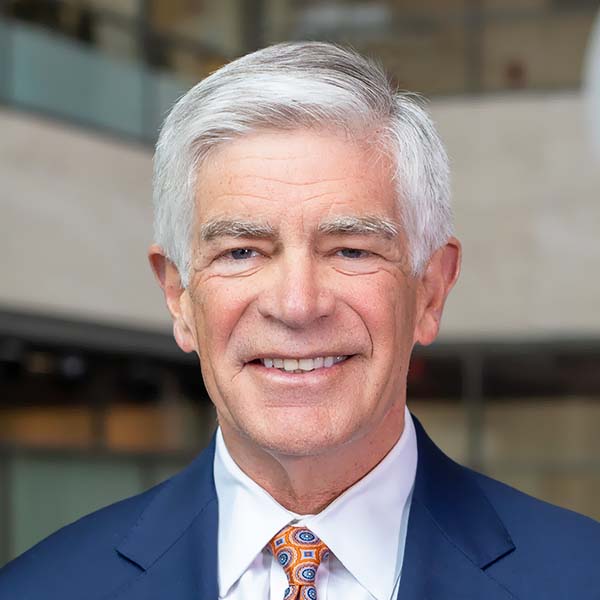Welcome and Introductions
Good afternoon and welcome. It’s a pleasure to be moderating this discussion of a subject that’s gathered interest and commentary from a vast array of outlets: the Federal Reserve’s balance sheet and what the future holds.
I’m joined today by my colleague Jim Bullard, president and CEO of the Federal Reserve Bank of St. Louis; Lisa Emsbo-Mattingly, director of research in the Global Asset Allocation group at Fidelity Investments; and another colleague, Governor Randy Quarles of the Federal Reserve’s Board of Governors. Everyone here is familiar with our panelists, and their bios are in front of you, so I’ll skip the customary recitation of their CVs — which are obviously as long as they are impressive, and I think we’d all rather spend that time hearing what they have to say.
Before I start, I’ll issue the standard Fed disclaimer that the views expressed today are mine alone and do not necessarily reflect those of anyone else in the Federal Reserve System — something that my colleagues and I may well demonstrate in a few minutes. I will, however, speak on their behalf to say that the disclaimer extends to all of us, to spare them having to repeat it.
The Fed’s Balance Sheet — A Brief History and Where Things Stand Today
Before I ask the first question, I’d like to start by putting the subject of the discussion in context, with a quick reminder of the present state of the balance sheet and its recent history.
In October of 2017, we started the normalization process by decreasing the reinvestment of principal payments from our Treasury and MBS securities. Since then, we’ve reduced our securities holdings by close to half a trillion dollars.
The aggregate level of reserves currently stands at roughly $1.6 trillion. That’s $600 billion less than when we started unwinding, because reserves decline both with asset redemptions and the growth of other liabilities, such as currency. Overall, the current level of reserves is $1.2 trillion less than the peak of $2.8 trillion, back in 2014.
We noted at the time that the unwinding would be essentially on autopilot and spectacularly boring — though we were clear about our intent to keep an eye on things.
As that process has unfolded, and aggregate reserves have declined, we’re coming to a more interesting juncture. And so, in recognition of the beginning of the end, last November we resumed our discussions of the Committee’s plans to implement monetary policy over the longer run.
Staff from across the Federal Reserve System presented excellent work on an array of options.
After careful consideration, we agreed that the current implementation framework has served us very well. Our administered rates have proven effective at controlling short-term interest rates. This allows us to continue using changes in the target range of the fed funds rate as the primary means of adjusting the stance of monetary policy. In January, therefore, we communicated our intention to maintain an “ample supply of reserves,” that ensures control over the federal funds rate via our administered rates, without necessitating active management of the supply of reserves.
Transition to the Long-Run Framework
So we stand today knowing what we want the long-run framework to look like, knowing that we are getting closer every day, and knowing that we are not that far from the efficient level of reserves. We have therefore started discussing our transition plans to the long-run implementation framework, and will continue to do that in future meetings.
In my view, a key issue is that we only have estimates of the demand for reserves, and we certainly don’t have the luxury of a tensile test — breaking points in engineering and monetary policy are very different animals.
It is my own view that we should approach the end of normalization with caution. Based on work by my staff, I have proposed that we can substantially slow the decline in reserves by ending the reduction in asset holdings later this year; reserves would then diminish at a very gradual pace, reflecting the trend growth of other Federal Reserve liabilities.1
A slow and steady approach is not only the safer option, it’s one that will reduce uncertainty about the evolution of the balance sheet. It is also firmly in line with the FOMC’s stated objective to proceed in a “gradual and predictable manner.”
Questions for the Panel
Back when we started the normalization journey, I promised that it would be the policy equivalent of watching paint dry — and it certainly was, for over a year. Yet despite laying out a gradual, predictable path, and communicating that path with regularity, the recent interest in the subject makes me wonder if I’ve underestimated the allure of dried paint.
So I would like to start by asking our panelists: Given that the reduction in asset holdings was announced well in advance, and given that it proceeded smoothly in the background as promised, why is it that balance sheet policy has suddenly leapt to the front page?
I’ll parcel that with a related question, because the public discussion will turn next to the composition of the balance sheet: We are on record as preferring that our securities holdings be primarily Treasuries, but what about their maturity composition? More broadly, what should be our most important considerations in discussing the composition of the balance sheet?
The views expressed here are the speaker’s own and do not necessarily reflect those of anyone else in the Federal Reserve System.
[1] I would like to thank Roc Armenter for his research and insight.
View the Full Speech

